The forest-fire-smoke-induced-orange ball of sun broke the jagged 10,000 foot spine of the Continental Divide as I braked my truck and trailer to a gentle stop. I had the big gooseneck with 8 horses on board, and I chose the open grassy spot next to a massive crack willow trunk. The spreading branches arched over the two track that ushered arrivals into the century old main ranch cabin, barn and outbuildings that made up the 1800s vintage Broken Pick Ranch.
Broken Pick is still owned by the Morton family, of Carmen, Idaho. Bob is a good friend of ours, dating back to our former days in Carmen in the 1980s. The district of Carmen is and always has been little more than a tiny log post office (zip code 83462) and a Grange Hall (of which Caryl and I are still members, even though now we live over an hour away).
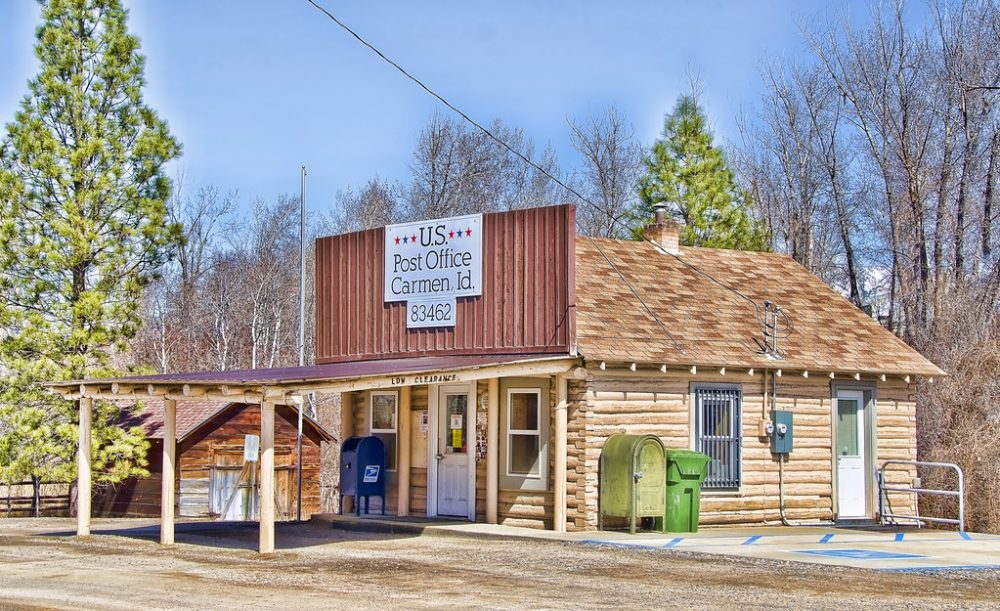
The Grange stands as a sort of a centerpiece to the tiny ranching community. There were and still are dances, weddings and funerals there. Humans took horse and wagon, and later automobile and pickup truck to meet and exchange conversation, making their remote mountain and canyon existence tolerable for the extroverts while offering confirmation for the introverts.
Carmen is named such due to a creek of the same name, tributary to the Salmon River, and sourced in 5 canyons that slice abruptly into the solid rock upthrusted headwall of the Great Divide.
I looked across the alpine bowls of the great peaks. Despite the smoke, I could still make out high meadows where I had hunted for elk and deer. My eye drifted down to one particularly rocky canyon, and memories from 35 years ago came alive.
Caryl and I used to live in that canyon; it was one called Freeman Creek. There, on the Jack and Diane Ellis Ranch, we made our first home after marrying, and lived there in an 1890s cabin in bliss for 5 years. We got a great deal on rent: help the Ellis’s with a few ranch chores and we could live in the old homestead for free.
It was the last place on the old mining track up Freeman Canyon, and the setting was astoundingly beautiful, with a roaring creek in the backyard and snow-decked rocky peaks reaching to the sky above. We lived at edge of the mountains, where sagebrush met forest. We shared our tiny valley with abundant fauna; elk, deer, bears, coyotes, mountain lions, and the occasional mountain goat.
We tried ignorantly introducing tomatoes to the little valley. And corn, and summer squash. They all froze in August, long before ripening, and so did we. Winters were an exercise in adversity. Thirty and even forty below nights were not uncommon. We ran cords of wood through a parlor woodstove. But it wasn’t enough. We slept under so many blankets acquired from the local thrift store in Salmon that we couldn’t move under the weight; you were sort of shackled while you slept.
Keeping the drafty, rotten-logged home warm was pretty near impossible. Our pipes froze often; one winter, they froze in December and never ran again until April. Each year, the sun disappeared over a mountain ridge sometime in late November, and went into hibernation until mid February. It never rose during the midwinter months. Sure, we had daylight, but it was second-hand, reflected off the mountain peaks. So much for Vitamin D.
Despite being a solid log home crafted from nearby abundant stands of straight lodgepole pine, the house was sort of a virtual structure due to three factors: age, rot and termites. It certainly didn’t keep wind and subzero temperatures out. It stayed cool and very comfortable in the summer due to the mass of the log walls, but there were other hazards to be had at that time of year.
We would wake up to reddish brown convoys of army ants parading across the kitchen floor. These would be 5 to 6 inches wide (not the ants(!), but the line probably 20 ants wide, walking abreast) and stretch from one end of the kitchen to another, where they would disappear down another crack, similar to the one from where they came. We tried disturbing their ranks, but nothing worked. We’d sweep them up in a dustpan, and throw them out in the cow pasture outside. By the next morning, they were back. There were thousands. Millions. We tried squishing them, but it made a mess on the 1950s linoleum.
They rarely touched our food, but you had to watch where you stepped in the morning. Their bites between their steel-trap tiny jaws were like jabbing a tack in your leg. We never did figure out why they had to use our kitchen floor for their forays. Perhaps it was simply establishing territory, or maybe the 1890 house was built on an ant trail that started in that very spot back in, let’s say 1490.
The ants simply went over and through.
Skunks would occasionally show up in the kitchen, their crafty minds, desiring noses and dexterous paws finding ways to open our unlockable doors. We would shoo them out very carefully, afraid of forever living with skunk smell in our cooking area.
Bears would show up on the doorstep in both the front and backyard, as if asking to be let in.
Then there were the neighbors. I mean, they were not really wildlife, but they sort of were. These were no suburban neighbors; the nearest were over a mile down the two track. But occasionally they would just walk in. No knocking. It was surprising. I remember one afternoon, I came in the house after gathering some wood and I heard my neighbor Doris McBride’s voice in the parlor. I went in to see what was up, and she didn’t even look up. She was on the phone. My phone. I’m not sure they even had a phone.
I waved as I went by, feeling like an intruder in my own house, heading for the back of the cabin with an armload of wood for the parlor stove. She waved back, and when I came thru again to pack in another load, she was gone, driving her beat-up pickup further up into the canyon. I’m guessing they were heading up to find some meat. They treated the mountains like a pantry. When they were out of meat, they killed a deer. Wild game was always in season with the McBrides.
One time I remember looking out the back window of our bedroom, standing there in my skivvies. Two McBride boys were running across the hill in our backyard with lever action guns literally chasing after a whitetail deer. I never heard shots; I’m guessing they didn’t catch that deer.
It was June.
Back to just a few days ago as I pulled into this familiar area with my trailerful of horses. I took one last hit out of my coffee cup in the pickup truck on the Broken Pick. We called this the Carmen Corrals. Bob from the Broken Pick had some kind of long standing deal that anyone from the Carmen area could come and use the corrals and scales to weigh or sort cattle, sheep or horses when they come out of the mountains after a summer on the open range. Here probably millions of dollars of cattle traded over the hundred years it has been used. In a weathered board and batten shack was a Fairbanks balance beam stock scale that could weigh up to 20 head in one shot, surrounded by graying and cracked lodgepole pine pole pens, alleys, gates and corrals.
Here, the cascading conversion of the value of sunlight on soil, to grass and forb, to muscle and fat on growing steer was ascertained in a final weight. It was a season’s worth of work, dreams, hopes, and husbandry for a rancher. Some were made rich at this scale. Some just broke even.
And some just go broke. I wondered how many would be depressed when they sawe what the cost of drought was on their livelihoods on this year, the worst in 127. Many of this year’s calves would come in light.
But today was about horses, and outfitters had started rolling in with their own trailers. One of the corrals was full of prancing and shifting horseflesh.
They were mostly Craig’s horses; he’d rolled in with a semi. He’s got over 300 of them, and he hails from down in southern Idaho. Guides, Summer youth camps, and backcountry outfitters from all over the West contract with him for horses to use to augment their own strings. He puts a start on all of them as they come of age, leases them out, and brings them back home for the winter.
I watched Craig in the corrals, his aging fireplug form, shifting, drifting thru the throng as they milled about. There must have been well over thirty trotting, rearing and positioning themselves in a sort of equine family reunion. Occasionally, one would buck, or throw a carefully placed kick at another. They knew each other like family, but sometimes the family dynamic of horses is a little dysfunctional.
Craig is a little unwieldy in his older age, which isn’t helped by the quite large fully loaded pistol on his belt (this is fairly common in Idaho, especially in a backcountry setting). He doesn’t walk well. A lifetime of horse mishaps in the business can really change the shape of a person’s appendages, and yet, he quietly, peacefully walked through the milling horse herd in that corral. He knew them.
And they respected him. I watched as he placed a quiet hand on this one, and that, and spoke to them all. He’d halter ones he needed for a given outfitter or hunter, and hand a rope off to this cowboy or another, as they led them out of the corrals.
Meanwhile, I started unloading horses from my long trailer. In the dark of predawn back at the ranch an hour and a half away, daughter Linnaea and I had caught and loaded them. These, too, were all Craig’s horses, and he would send some off to an outfitter or camp. Others would simply go home and take the winter off. As I walked them out of the trailer and led them to their own log pen, I couldn’t help but feel a little melancholy. After all, these charges had carried us, our hired summer range riders, and even a lot of our gear on packsaddles while covering some of the roughest country in America. It was about 600 miles for them. They didn’t just carry us, but had become some of our closest friends and partners in the work of herding our beeves to the best in mountain grasslands.
They had seen and smelled wolves, bears and herds of bull elk running in velvet, blowing and snorting with double pointed ears and a quivering erect posture when they did. They’d eaten the sweet doughy-ness of Indian rice grass, and nipped tips of beautiful bluebunch. They tried flowers of balsamroot and the ripening grain berries of big basin wildrye. They drank out of crystal clear snowmelt creeks and sniffed see-forever air that later clogged with wildfire smoke.
And through it all, they faithfully learned (some were absolutely unlearned when they came, but Melanie and crew brought them all to a quiet respect) how to carry human and herd bovine across ravine, river and rill.
As I led each through the gate, pulled their halters and turned them loose into the throng of long lost fellows, I thought that they wouldn’t remember. I half watched as I turned them loose, vainly hoping for one set of eyes looking back toward me.
But I know in my clinical rancher mind that anthropomorphic fantasies such as that are imagination. I know they are equine, and they don’t see “relationships” as we humans do. But don’t they remember us? Isn’t there some form of connection that they can recall?
“Hey Glenn—heads up! I’m coming through!” I stepped back as Dave Wilson, hunting outfitter in the River of No Return Wilderness was leading a high stepping buckskin mare out of the ancient graying pole gate. Dave came first; he had a half smile on him as he led the leggy mare through the opening; his whiskery and weathered face betraying the fact that he had already been out on the backcountry for weeks at a time away from a razor or running water.
Suddenly, Craig, still in the corrals called out. “Hey Dave, you got an escapee!”

I looked behind the leggy mare, and a big gray gelding–a grulla—pushed his way out of the gate, free from corrals and the reunion that was going inside. He was well muscled, and a little wild-eyed, and was looking back and forth as if planning a runaway. He could literally run for miles if he got started. There were no fences outside of the corral area, and this was a horse with a big motor.
“Somebody get a rope!”, said Dave.
“I got a halter,” I said. Big gray started into a little bit of a trot as he got past Dave and the buckskin mare. I approached quietly but quickly and managed to stroke his neck even as he considered pulling away from me.
And then he stopped. And stood. I stroked him down the length of his neck for a moment before I slipped halter on. He exhaled, body relaxing. And suddenly, in that short moment, I remembered him.
He was the Grulla. It was simply Spanish for “the gray.” That’s what we all called him. We couldn’t ever come up with a name that seemed to fit him. He came from Craig’s bunch last year (“don’t know if you’ll get a handle on that one,” Craig had warned). He was hopelessly unbroke to humanity. We couldn’t even get shoes on him, let alone ride him. Even our farrier, a super experienced horseman, rodeo pick-up man, and general “hand,” was skeptical that he’d make a good range horse.
He was simply too watchy—too wild. As if to prove it, he pawed great holes in the ground with his front feet when we tied and haltered him up while waiting to shoe him—if we could. He called out with tremendous horse-cries to his cohorts in corral. Curtis, our shoe guy, kept a wary eye for a well placed bite or blow from a big precision aimed hoof.
But daughter Melanie eventually cajoled him into joining our herd. He was a proud horse, and it took some long days of riding in hard country to humble him a little, to convince him to take his rider’s way instead of his own. Melanie had a few wild rides on him, as did Linnaea. Grulla had an unusual ability to run down steep hills—fully sideways. But after a week or two, he began to get over such antics, and we all began to ride him.
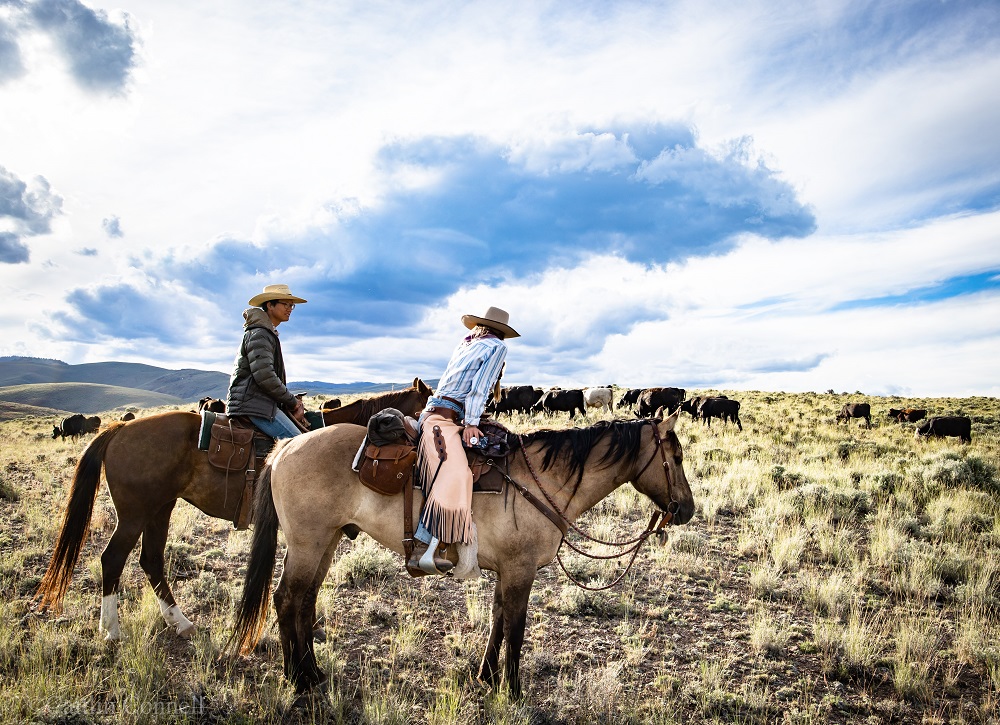
When I rode him on the range for a few days, there were moments when he would jump from his own shadow or a sage grouse erupting from brush. There were some rocks that looked no different from the rest that he’d just decide seemed suspicious. He’d jump and bolt, but eventually, over days and weeks, he became a favorite for the crew for his indefatigable spirit. Once you had his heart, he would do anything you asked.
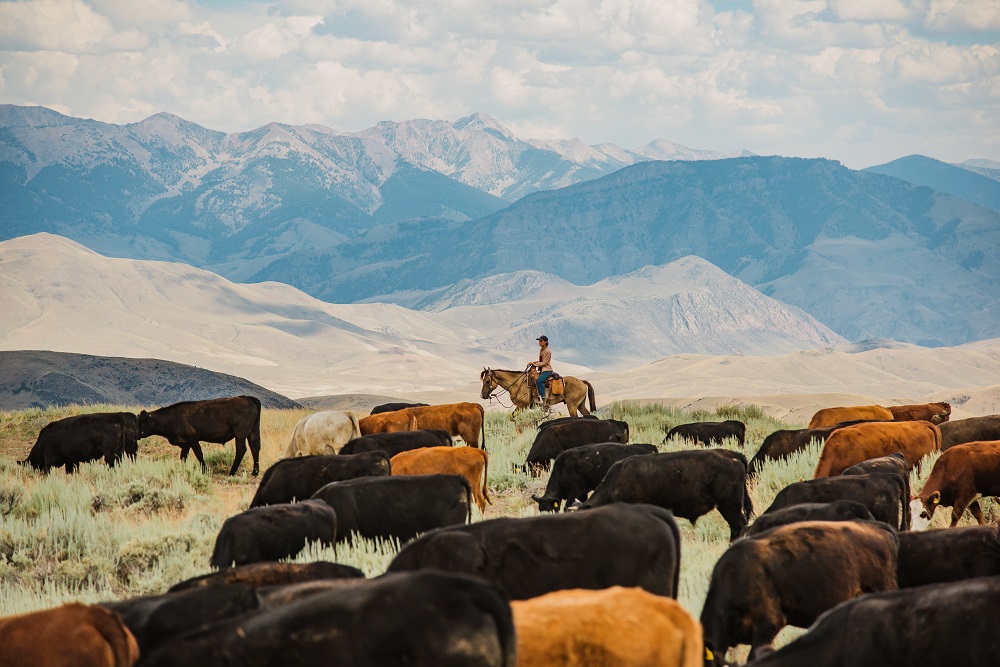
And today, as he exhaled and his eye softened as I stroked his neck, I realized that he remembered us—even me.
Maybe we can’t ever understand how the equine brain works. But I think there is a remembrance between us. A partnership.
Happy trails.
““Glenn

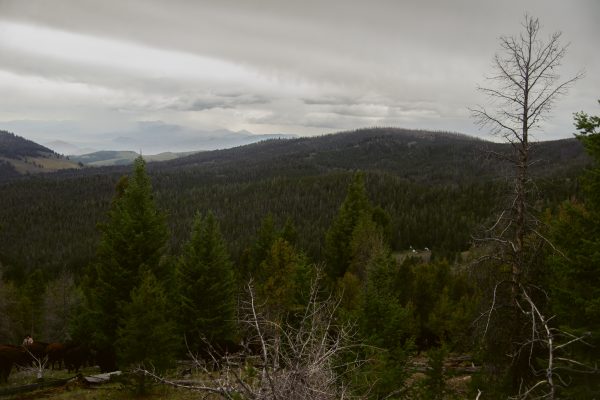

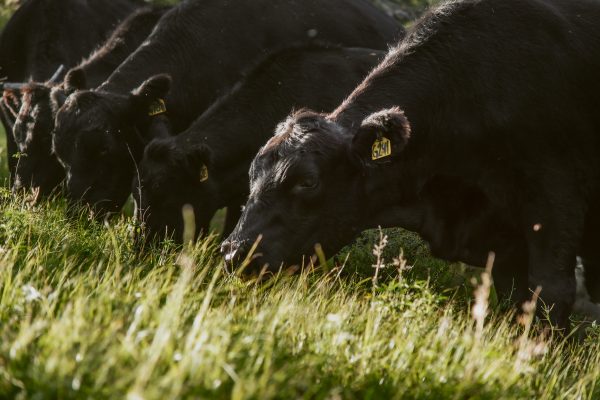



Deb Olsen
It’s crazy to think you started from scratch in your lives, all of the learning experiences of an old log cabin with marching ants, growing tomatoes in a climate that wouldn’t work, and creating a work/respect relationship with your equine. How much you’ve learned, God must be proud and shining on you. Thank you for another wonderful story!
David Jensen
Glenn,
Your writing is impeccable. I can picture amazing scenes while reading. It definitely invokes a bit of melancholy for sure, the history and how satisfyingly simple life was, even though we know it was more physically challenging, but oh so worth it! Caryl and yourself have done the most amazingly honorable creation of a lifestyle, family, and ranching life that I admire more than I can explain in word. The way quality Ray Hunt style Horsemanship is used and fused with running the beeves seems fulfilling to say the least!
We are very similar in age, and like you I’ve gravitated toward a mostly carnivore style of eating because of Auto Immune (psoriasis) issues surfacing back in my mid 40’s. Stumbled on to you from the Sean Baker Human Outliers podcast. All good though, the benefits have not only been controlling the psoriasis but my strength has increased more than any time in life. I hope to ride with you all someday! I’m sure time is not plentiful to plunge into writing a book, but Wow! It would be a great book. Blessings to you and the whole family! Safe riding!
David
Den Hall
Glenn, your posts transport me into a different world, a seeming different time and place. Are you sure you aren’t really from a fantasy world, a make-believe place? And to make it even better, your philosophizing brings tears to my eyes as I recognize someone with values and feelings akin to my own created in a time long ago. (I suspect I am somewhat older than you, but that is neither here nor there.)
Please keep ’em coming. I love them.
Den Hall
Shannon Weaver
Another beautiful life story! Every time we drive up Freeman Ck. We think about that old cabin you lived in! Wish it was still there. You both were very brave!â¤ï¸
Doug and Shannon
Caryl Elzinga
Doug and Shannon. Ah…but you still get to live there. And see that peak above your own home. I wish we took some time to spend time with you both when we lived up the creek. It was a beautiful time in both of our lives! -glenn
M I KE
I’m a little older than you; I grew up in Wyoming and initially planned on some sort of cow career. Life turned out different, though, so I really enjoy your writing….coulda’ been me?!
Caryl Elzinga
It could’ve been you, Mike. But to this day, after 30 years, my wife and I still wonder about different paths we could have taken. We’ve loved this one, but it was certainly difficult, and so often, we were flat broke. Overworked and underpaid, you know. There’s easier ways to make a living!!! -Glenn
Richard H Ellis
Hi Glen
Dick Ellis here, I like your description of the old house that I was born and raised in. Mom and Dad, Frank and Bessie Ellis bought it in 1937 and raised 3 boys in it. I lived in it for 17 years and had no running water, telephone, electricity or bathroom, had a “path”. My task every day was to go to the crick and carry for mom. Had to carry lots on Saturdays for the weekly bath in the metal tub.
Mom always had a big garden which raised great produce, except for an exceptional early frost which you must have experienced. We would pack the dugout storage with produce that would last most of the winter. I thought this was just the way it was.
The view of freeman peak out the kitchen window made it seem great.
Caryl Elzinga
Richard! You describe it perfectly. I was wondering what that dugout was for–now I know. I’ve met your mom, Bessie–a great lady indeed. And apparently a tenacious survivor and thriver in the high country of Freeman Creek! It wasn’t for wimps, that’s for dang sure! We stayed there 6 years, and starting missing it the day we left. We did have it better than you, though, Richard! We did have running water (when it didn’t freeze solid), power and a phone. I feel like we were spoiled compared to you. But like you, I will never ever forget that view of Freeman Peak through the kitchen window. It is branded on my mind. -Glenn
Skyler Epperson
Your writing lets me remember a day here and a day there that may never be remembered if not for you.
jeff zaremsky
It was an honor for Barbara and me to stay in that Freeman creek cabin with the two of you during our honeymoon 30 or so years ago. It has left a lasting impression on our minds.
I read someone comment that it is not there any more. What happened to it?